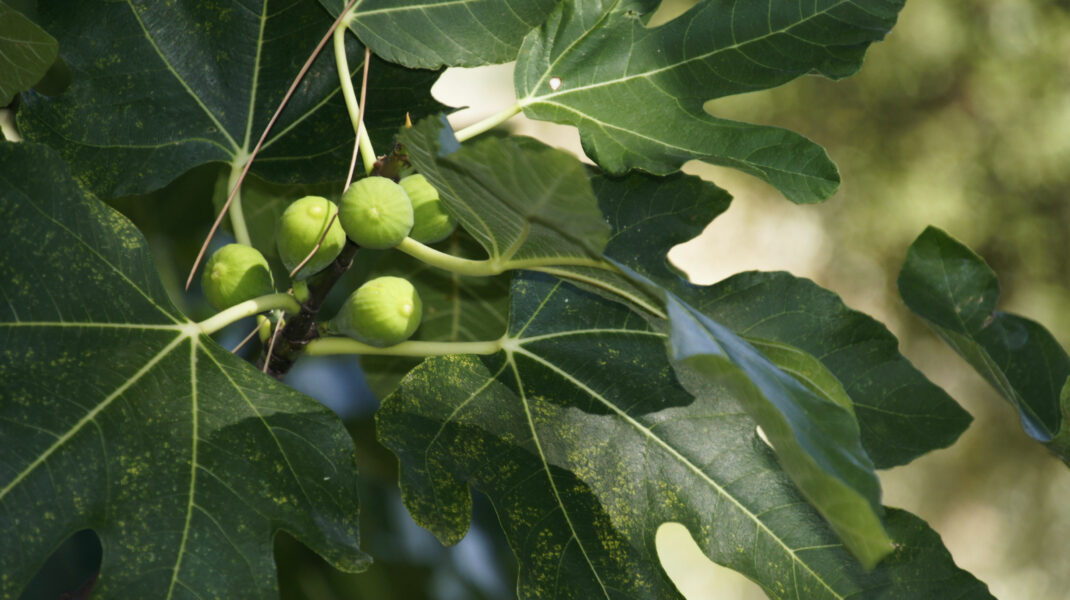The resilience of these ancient trees prompted a research initiative to study the fruit’s potential as a sustainable crop for Mediterranean farmers.
Abdessalem Zgaya stands on baked, cracking soil where water once trickled, looking over his fruit fields on the plain below Kesra, northern Tunisia. It’s the first time he has seen a spring dry up. “The summers just get hotter and hotter,” he says, adjusting his cap to block the sun. “I don’t know how much longer my lemon trees can survive.”
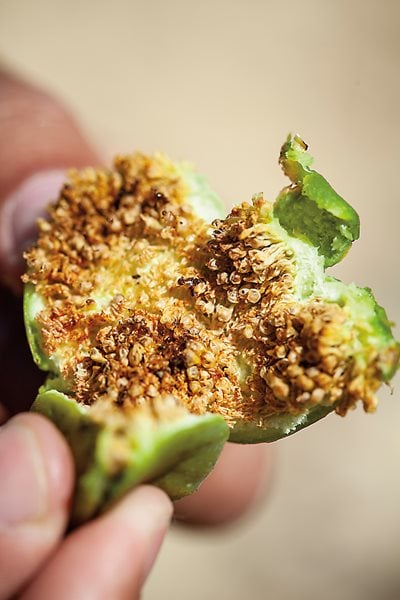
Amid the still, heavy air, Zgaya points out a row of young trees, starkly green against the brown-gold tones of the landscape. “The figs are different. See how their leaves are wilting? It helps the plants conserve water in the heat. When it gets cooler tonight, they’ll perk back up”.
Indeed, fig trees tolerate drought better than most, and as agriculture struggles in a warming world, that makes them ripe for study. For nearly four years, a Mediterranean research initiative, FIGGEN, has assessed how figs succeed while climate changes are causing other crops to fail. Though Zgaya isn’t part of the project, he, and other farmers in Tunisia, stand to benefit from FIGGEN’s findings.
The study, which concludes in 2024, involves DNA stress testing and analysis of a wide variety of figs in Tunisia, Turkey and Spain. Scientists have been working to identify specific genetic traits that enable the resilience of figs and their varieties that cope best with hot and dry conditions. When FIGGEN publishes the results Mediterranean farmers concerned for their future livelihoods may choose to grow the most promising types. Additionally, the study aims to plant a seed for preserving the biodiversity of increasingly arid ecosystems.
Scientists have worked to identify the genetic traits that enable figs’ resilience to heat and drought. The study’s results can empower Mediterranean farmers to grow the most promising types.
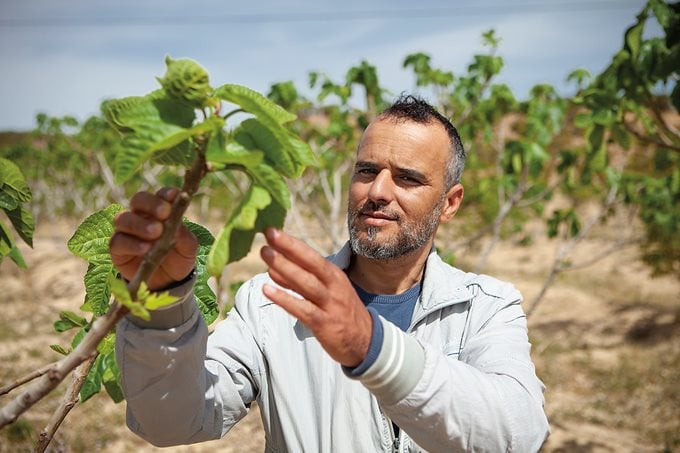
How did figs survive throughout history?
Back in 2006, in the ruins of a prehistoric village in the Jordan River Valley, a team of archeobotanists found proof that figs had been cultivated 11,400 years ago—long before the domestication of wheat, barley or legumes. As they outlined in the journal Science, this discovery could make the fruit trees the oldest-known agricultural crop.
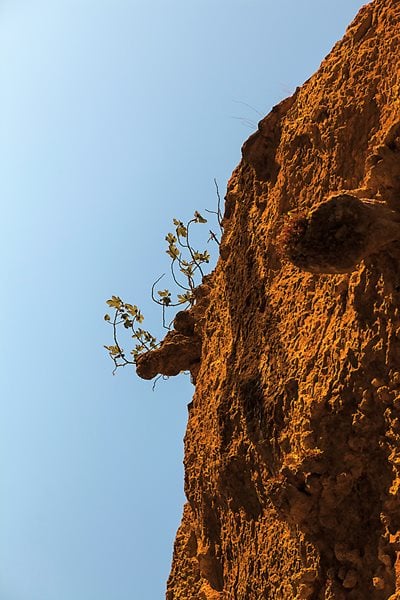
The fig’s place in our history and culture is indeed deeply rooted. From its culinary use to its religious symbolism, as evoked in the Bible and the Qur’an, the fig has played a role in the birth of civilization. Believed to be indigenous to northern Asia Minor, figs have been cultivated around the Aegean and the Levant since ancient times. During the Greek and Roman empires, the popularity of figs spread, and their love of the well-draining soil of semi-arid climates made them an important crop, alongside olives, grapes and dates, farmed across the Mediterranean Basin by the first century CE.
Nowadays, agricultural conditions in the region are changing. According to a World Meteorological Organization report released at the end of last year, 2011-20 was the warmest decade on record. Land temperatures, it reports, have increased by 2 degrees Celsius since Industrial times—twice the global average—and the future bodes more frequent summer heatwaves and less rain. Such conditions also raise salt levels in dwindling groundwater, compounding the challenges plants face.
Fig trees, however, survive with minimal water, have little need for fertilizer and are resistant to many pests. They may burn in a forest fire but will grow back the following year. When a fig tree is cut down, a new shoot will generally spring from its stump. Wild figs may even grow on cliffs or in walls, where no soil can be seen and no water reach. Their formidable, fast-growing roots can tear rocks apart, finding water where other trees simply cannot.
“We are trying to find that rather special resistance gene”.
– Ghada Baraket.
That makes many of the 800 species of the Ficus genus, as per the Journal of Ethnobiology and Ethnomedicine, ecologically exceptional. Shade offered by their dense leaf canopies cools hot air and slows evaporation and the flow of rainwater over the ground, which limits erosion and retains soil moisture and organic matter.
Ficus fruits are a food source for more animal species than any other known fruit, a 2001 Cambridge University study showed. Animals disperse fig seeds (and those of other plants) widely, increasing the landscape’s biodiversity and rendering it more resistant to climatic uncertainties.
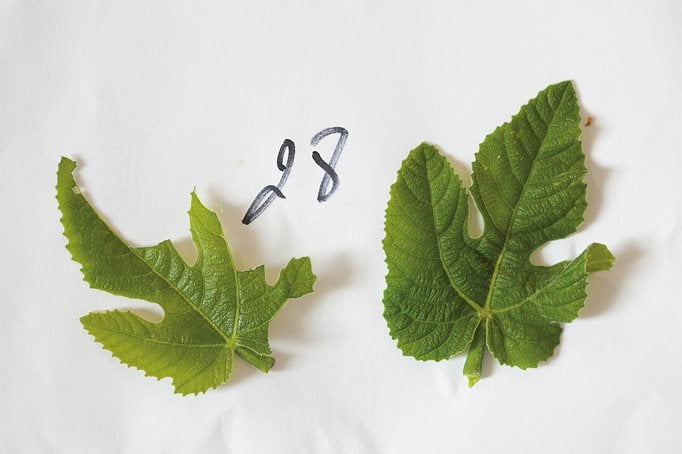
The FIGGEN project
A few years ago, the sight from a train window of a fig tree growing robustly out of a cliff drove Riccardo Gucci, a professor of agrarian science at the University of Pisa in Italy, to investigate how any tree could thrive in such an environment. That thought eventually grew into FIGGEN.
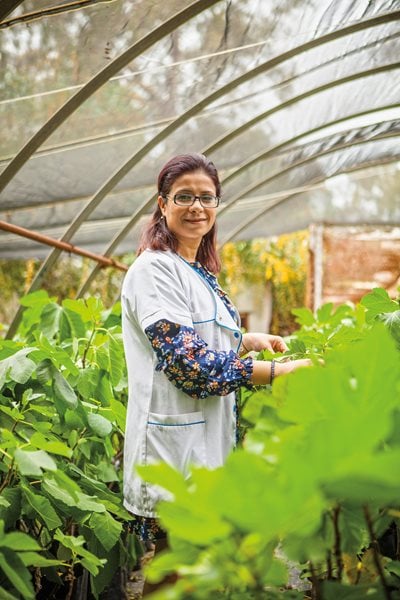
To discover which varieties of Ficus carica (the common fig) cope best with climate change, FIGGEN teams gathered cuttings of a total of 270 different varieties. Some fig trees fruit once a year and others two or three times. Some have male and female flowers, others only female. Some trees need pollination, whereas others can produce fruit without it. In laboratory gardens, eight plants of each variety were grown in pots, and in late 2021 the testing of their resilience to a lack of water and increased salinity began.
The FIGGEN researchers have compiled a list of the 23 fig varieties that did best. A catalog will detail each project country’s most tolerant varieties, and their characteristics, including the fruits’ size, juiciness and perishability, and the tree’s resistance to disease. Catalogs will be distributed to dozens of farmers, nurseries and plant breeders, so that they may choose the most commercially viable and drought-resistant figs to work with in the future—potentially enabling agriculture across the Mediterranean to adapt to new conditions.
«Al proporcionar los primeros marcadores genéticos avanzados asociados a estos importantes rasgos, apoyaremos a los criadores de higos en su búsqueda por crear nuevas variedades aún mejor adaptadas al cambio climático.»
-Tommaso Giordani.
“Figs have the potential to be one of the most profitable crops in the Mediterranean today, especially in areas that are difficult for other crops,” says Tommaso Giordani, the coordinator of FIGGEN.
For the first time, FIGGEN’s work is identifying DNA sequences linked to the plants’ characteristic resilience to drought and salinity, among other qualities. “It is not our job to make future hybrids,” explains Giordani. “But by providing the first advanced genetic markers associated to these important traits, we will support fig breeders in their quest to create new varieties of fig even better adapted to climate change and help Mediterranean farmers to survive.”
According to World Bank records, Turkey is by far the biggest exporter of figs worldwide. Yet Tunisia is an important producer on the south side of the Mediterranean and, unlike Turkey, has never widely industrialized the process.
Tunisian varieties of Ficus carica, both wild and cultivated, are numerous. They vary from region to region, where they have adapted to local conditions and been selectively bred by villagers, who continue the age-old Mediterranean tradition of small-scale family farming. It was in Tunisia where FIGGEN researchers scoured the greatest range of regions and climates for fig varieties, rather than taking samples from national collections.
Ghada Baraket, of the University of Tunis El Manar’s Faculty of Science, holds a doctorate in fig genetics and heads up the FIGGEN project team in Tunisia. Thanks to the length and breadth of the country, and the contributions of farmers, cuttings of no less than 110 varieties were collected for FIGGEN’s drought-testing protocol. “We are all different thanks to our DNA, and our morphology is an expression of that. Figs are no different—what makes them resistant to drought conditions is coded in their DNA. We are trying to find that rather special resistance gene,” Baraket says.
Tunisia’s figs
Because there are hundreds of varieties of the common fig, they bear different names depending on where in the Mediterranean Basin they are grown. The names of Tunisian figs likewise vary by their region of origin; common ones include Bouhouli, Zidi and Magouli.
Figs from the Djebba region, in northwest Tunisia, are known for their exceptional quality because of the valley’s microclimate and local farmers’ ancestral growing methods.
Few of the terraced plots known as ejennas exceed one hectare, and figs grow alongside other fruit trees, vegetables and herbs in polyculture, a sustainable system that is based on traditional Berber farming. A network of tiny canals, established in the 17th century, provides water to hundreds of local farmers.
The hanging gardens of Djebba el Olia, perched on Mount Gorra, are a United Nations-recognized agricultural heritage system and serve as a food resource to the landowners. Djebba’s figs—mainly the Bouhouli variety—were the first fruit in Tunisia to receive an appellation d’origine contrôlée food-standards label, a recognition for their distinctive qualities.
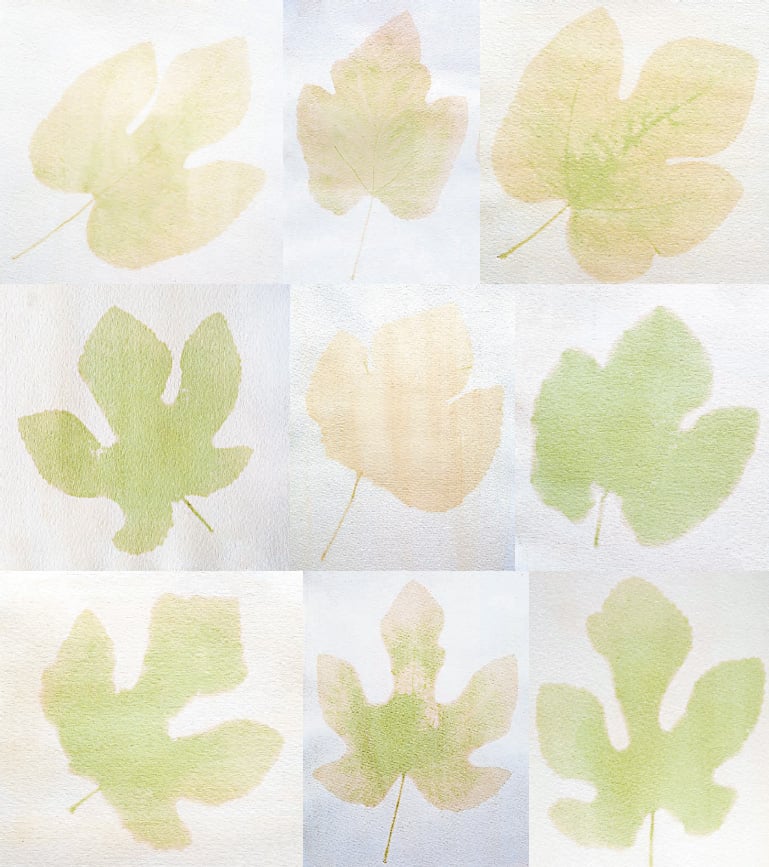
FIGGEN participants Faouzi Djebbi and his wife, Latifa, are the proud owners of a 0.7-hectare plot in Djebba el Olia. Seven varieties of fig trees jostle with orange, pomegranate and quince trees; chickens snooze among the broad beans, onions and geraniums growing in the dappled shade.“All my knowledge about figs, farming and growing food comes from my father, which came from my grandfather, which came from his father,” says Faouzi. Yet he says changing climate threatens timeless traditions here. Springs that flowed at 30 liters per second five years ago have slowed to half that, and some crops are disappearing.
Faouzi’s father used to grow tomatoes and parsley in the garden, but they don’t survive anymore. “Snow used to coat our garden every winter, soaking the soil and killing pests. But it only ever falls on the summit these days,” says Latifa, pointing up to the rocky peak of Mount Gorra. A Ficus carica may be resilient to drought, but when watered regularly (farmers in Djebba water their trees up to 3,000 liters every fortnight), it becomes dependent and grows shallow, vulnerable roots.
Faouzi’s neighbor Anwer Djebbi (no relation) says his father’s garden is outside the catchment of Djebba el Olia’s springs and has limited access to water. But he says that is not necessarily a bad thing. “If you don’t give a fig much water, it will find it by itself, growing roots far down into the soil”. A big drought a few years ago reinforced what the family knew: “My father’s figs may be smaller, but he didn’t lose a single tree—unlike many of the farmers growing figs around here”.
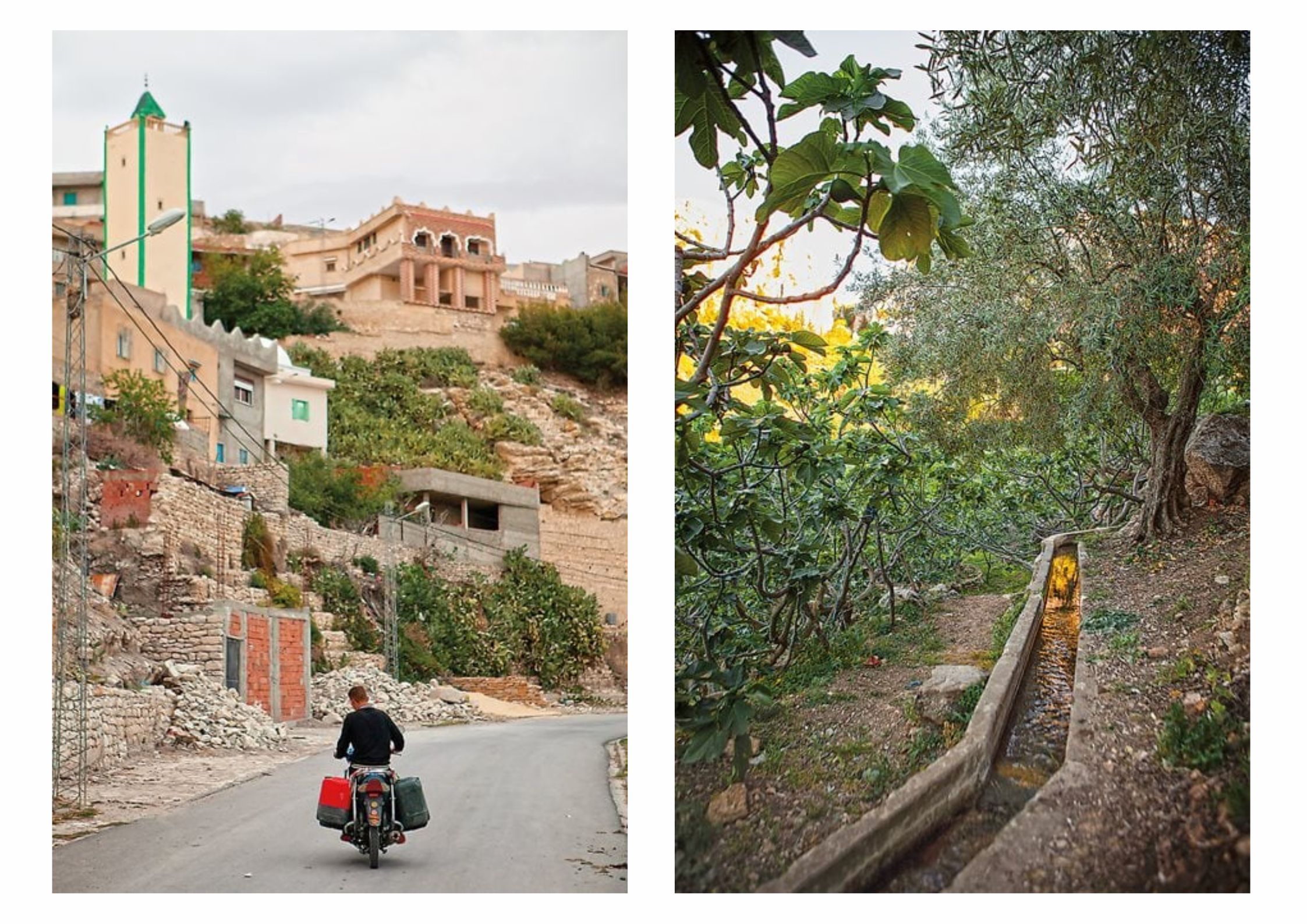
“If you don’t give a fig much water, it will find it by itself, growing roots far down into the soil”.
-Anwer Djebbi.
Kesra is the highest village in Tunisia, perched at an altitude of 1,150 meters. Looking out over breathtaking views from the café terrace, Zgaya points out his plantation on the plateau below. It is one of the largest fruit farms in the area. Alongside cherry, lemon, orange and walnut trees, Zgaya tends to 1,200 fig trees, the majority of the Zidi variety. “When my father was my age, only half the fig trees in Kesra were Zidis,” he says. “Nowadays Zidis have completely taken over.”
Many traditional varieties originating from the Kesra region produce abiadh (white) figs. Over the past 20 years, these older varieties have started to disappear. Until the 1960s, figs could not be transported far as they spoil quickly in the heat, so they were sold locally or kept for home consumption. Vehicles and new techniques to keep cargo cool opened the possibility of selling figs in distant cities where the biggest, darkest, juiciest offerings commanded the highest prices. Zidi figs are large, with a thick skin that keeps the fruit fresh for longer and, depending on their size, farmers can sell Zidis for three times the sum paid for other, smaller abiadh varieties.
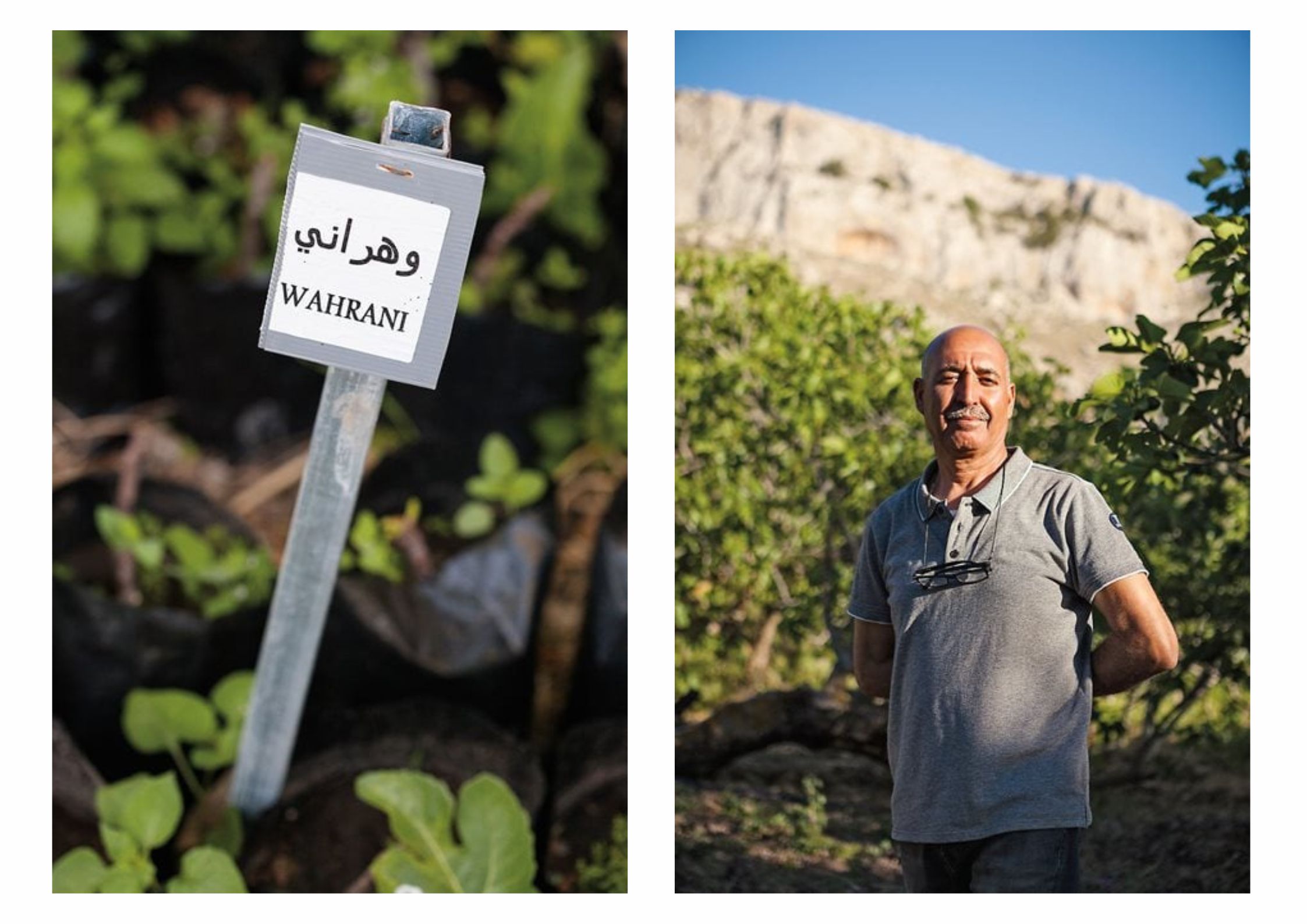
“All my knowledge about figs, farming and growing food comes from my father, which came from my grandfather, which came from his father”.
-Faouzi Djebbi.
There is a catch: To grow lots of fat figs, Zidi trees demand plentiful water. As the land becomes drier, farmers are realizing that reduced fig diversity may threaten their livelihoods. During recent droughts, Zgaya observed that his Zidis sacrificed their fruits to survive. Instead of producing 30 kilograms (60 pounds) of figs, a tree was giving perhaps only 7 kilograms (15.4 pounds) and the fruit was smaller. “However, I have noticed that the fruits of other varieties of fig are less affected by drought,” he says.
For example, “one day I tasted some delicious figs in the market that I didn’t recognize. I found out that they came from Medenine” in southeastern Tunisia, Zgaya says. His curiosity led him to take a few cuttings from a Bayoudhi fig tree that grew in a wall in that village.
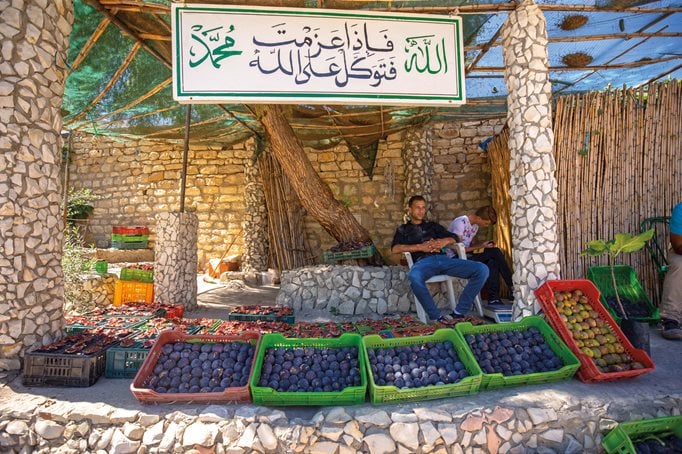
Through his contacts, he was astonished to learn that his cuttings would need watering only once when put in the soil to root. While slower growing than local trees, they had resisted drought conditions well, and Zgaya was thrilled that they produced a large quantity of fruit and high quality: sweet and suitable for drying. He now plans to open a fig nursery and pioneer the propagation of this southern variety in Kesra.
Zgaya was lucky with his discovery. But as the growing season begins, fig farmers, breeders and observers around the Mediterranean will be able to benefit from FIGGEN’s catalogs.
The study identifying the most drought-tolerant fig varieties in Tunisia, Turkey and Spain will be available on its website and in scientific journals this year. FIGGEN’S vital work will help protect farmers’ livelihoods, benefit rural Mediterranean economies and preserve lands that might otherwise be lost to cultivation entirely in the face of a hotter and drier climate reality. Back in Kesra, Zgaya takes a fig leaf gently in his hand.
“Figs were here before us,” he says. “They belong not to us but to this land, and they will be here long after we are gone. There is no doubt about that.”
Fuente: AramcoWorld
Text and images by Rebecca Marshall.
This post is available in: English Español

